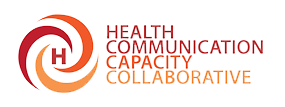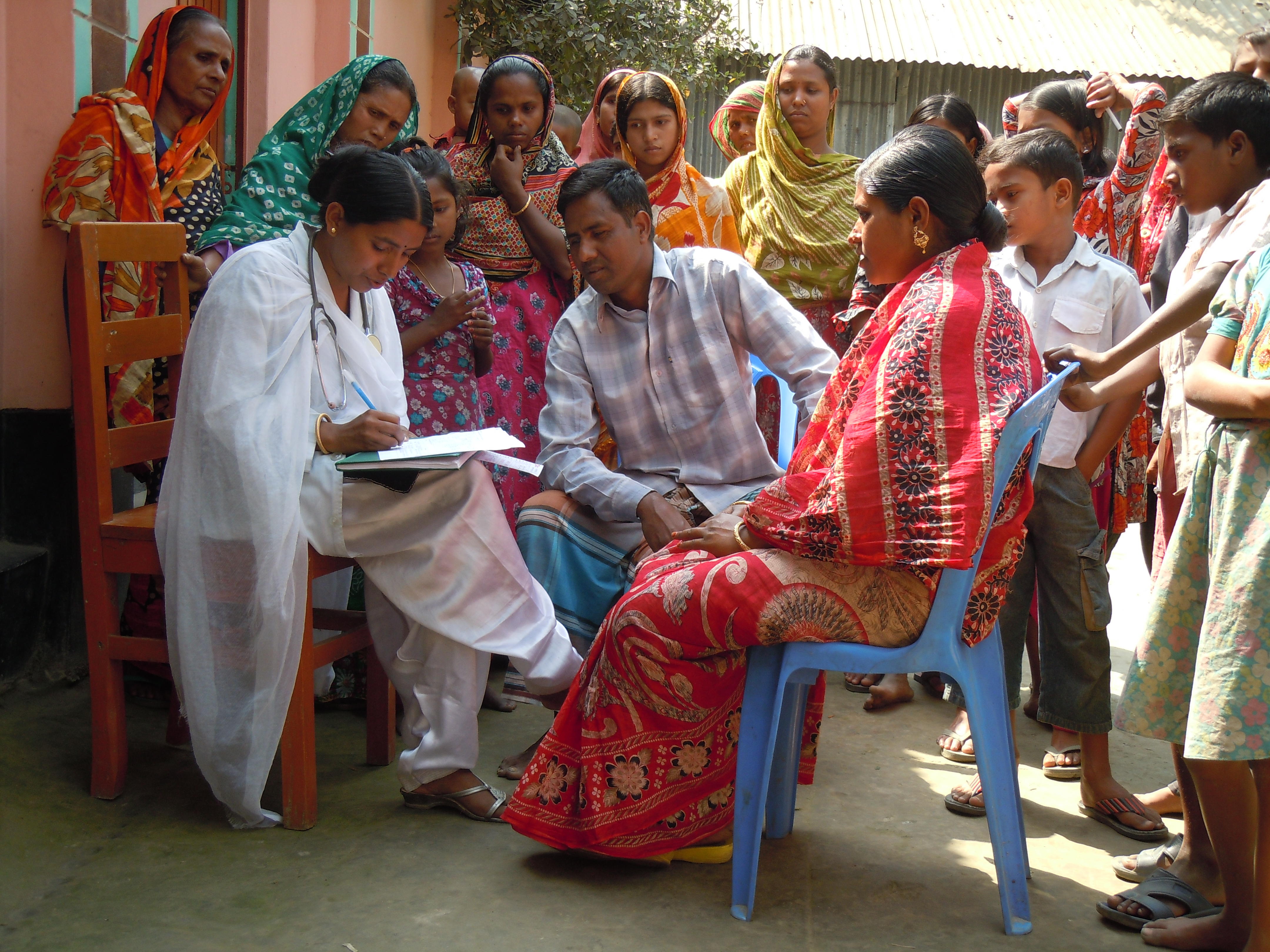Introduction
This SBCC Implementation Kit (or I-Kit) provides practical guidance on developing a communication strategy for social and behavior change communication (SBCC).
Social and behavior change communication is used throughout this I-Kit. Implicit in this term are other names which have been used to describe this field, including behavior change communication, demand side, strategic communication, health communication, and advocacy, communication and social mobilization (ACSM).
Social and Behavior Change Communication
Social and behavior change communication (SBCC) uses science and data as well as creative ideas to focus on:
- Changing or positively influencing social norms in support of long-term, sustainable behavior change at the population level
- Fostering long-term, normative shifts in behavior in support of increasing the practice of healthy behaviors
- Improving health services provider-client interactions
- Strengthening community responses to issues
- Influencing decision-makers and family and peer networks
- Increasing demand for health services and products
- Increasing correct use of health services and products
- Influencing policy
- Encouraging an increased capacity for local planning and implementation of health improvement efforts
To be most effective, SBCC efforts should be matched with efforts to expand services, increase access to commodities, and train and equip providers to meet increased demand for products and/or services. Without these links, audiences may become discouraged and will eventually stop paying attention to the messages.
Communication Strategy Process
The communication strategy may be developed for a variety of purposes and in a variety of ways, from a three-person team that needs to deliver a marketing communication strategy to promote a product to a national task force developing a broad multi-sectoral action plan to an organization that needs to rebrand its services. A team of stakeholders may work together in a participatory workshop setting to develop the strategy document or a core working group (from a few people to a whole team or task force) may work on the strategy development, consulting with stakeholders as needed.
Stakeholders include public, private and NGO (or civil society) sector agencies, relevant Government Ministries, service delivery groups, audience members, advertising agencies, research organizations, media and technical experts. Participation of individuals and/or groups directly affected by the challenge is crucial from the start. Their active involvement can help increase program impact and can lead to long-term sustainability.
The I-Kit includes eight steps in the strategy development process and tools in each one to help compile the needed information. The tools and exercises are not meant to be a strict formula to follow. Rather, the steps are flexible guidelines to be used according to the situation and can thus be adapted according to need. For example, you may already have much of the background work completed and an idea of what challenge to address. In this case, you may want to begin with steps after the Analysis Step. In other instances, all that may be available are research results which have yet to be analyzed so you would want to begin right at Step 1.
Detailed examples of SBCC programs are in the sidebar to illustrate how these steps have been implemented in the field. Most of the lessons in this I-Kit are derived from health communication experience, but the lessons can also be applied to other sectors such as education and democracy and governance.
Before you begin...
The development of a communication strategy is a process that needs to be informed by insights, data and evidence. To prepare for your Strategy Development workshop or working group, it is recommended you complete Step 1, Analysis of the Situation, prior to starting. This will help ensure you have as complete a picture as possible of the challenge, the current situation and the group(s) most affected by the challenge.
This preparation may include a literature review on the current situation for the issue of concern, the major barriers and facilitators to social and behavior change, and emerging issues. The literature review may also provide information on programs/campaigns in other countries that have addressed the same challenge or that focused on similar groups or contexts. Information on the current communication situation in your country should be included as well, to give participants an idea of what approaches are currently used and who is currently implementing SBCC programs.
You may find you need to supplement current information with additional research to guide program planning. This additional research could include collecting further qualitative or quantitative data or conducting a secondary analysis of existing data.
The information gathered from the steps in this I-Kit will form the outline for a Communication Strategy. A communication strategy provides a focused approach through a “road map” for SBCC efforts. This road map ensures that communication activities and outputs are coordinated and harmonized to achieve agreed-upon goals and objectives. It is based upon evidence and typically outlines priority audiences, communication objectives, strategic approaches, positioning and messages, along with plans for implementation and monitoring and evaluation. Implementers use communication strategies as the basis for their program design, which eventually results in the development and implementation of activities such as mass media programming, community-level activities, interpersonal communication and counseling, and other strategic approaches.
The Communication Strategy, however, is not a static product. It must be responsive to an ever-changing environment. Adaptations may thus be necessary to respond to new research findings and data, unexpected events, changing priorities or unforeseen results.
SBCC Planning Process
Most successful SBCC programs follow a planning process which consists of the following five steps:
- Inquire
- Design Strategy
- Create and Test
- Mobilize and Monitor
- Evaluate and Evolve
Throughout these steps, multiple stakeholders at the national, district and community levels should be fully engaged, which in turn strengthens their capacity for SBCC planning and implementation.
The P-Process
For more on SBCC planning, please read the The P ProcessTM. Five Steps to Strategic Communication.This I-Kit focuses on the first two of these planning steps, Inquire and Design Strategy:
- Inquire aims to gain a deeper understanding of the SBCC challenge within a specific context and of the social and behavioral drivers that facilitate or act as barriers to uptake of desired behavior(s). Inquire is a situation analysis based on available country-level research data and evidence and includes:
- Learning about those affected and their perceived needs
- Understanding social and cultural norms that may affect the challenge
- Identifying communication resources and existing capacity
- Identifying potential constraints on and facilitators for individual and collective change. If existing data is not available, it may be necessary to conduct additional formative research.
- Design Strategy incorporates what has been learned during the Inquire step and uses the information gathered to develop a strategic plan for reaching program objectives. This step focuses on developing the Communication Strategy, which includes information from the situation analysis, communication objectives, audience segmentation, program approaches, a workplan, and a plan for monitoring and evaluation.
Howard-Grabman, L., & Snetro, G. (2003). How to mobilize communities for health and social change.
Kincaid, D. L., & Do, M. P. (2003). Causal attribution and cost-effectiveness of a national communication campaign: Family planning promotion in the Philippines. Baltimore, MD: Center for Communication Programs, Johns Hopkins University.
Maxfield, A. (2004). Information and communication technologies for the developing world.
National Cancer Institute, Pink Book – Making Health Communication Programs Work.
Salem, R. M., Bernstein, J., & Sullivan, T. M. (2008). Tools for behavior change communication.
UNICEF. Communication Emergency Response to Newly Emerging and Re-Emerging Diseases. Draft.
ACSM: Advocacy, Communication, and Social Mobilization
CCP: Center for Communication Programs
CHCT: Couples HIV Counseling and Testing
CHW: Community Health Worker
FGC: Female Genital Cutting
GHS: Ghana Health Service
HCT: HIV Counseling and Testing
IDU: Injecting Drug Users
IPC: Interpersonal Communication
JHHESA: Johns Hopkins Health and Education in South Africa
K4Health: Knowledge for Health
M&E: Monitoring and Evaluation
MOH: Ministry of Health
NURHI: Nigeria Urban Reproductive Health Initiative
PACTO: Active Prevention and Communication for All
PAIMAN: Pakistan Initiative for Mothers and Newborns
SBCC: Social Behavior Change Communication
SMS: Short Message Service (text message)
USAID: United States Agency for International Development



No Comments